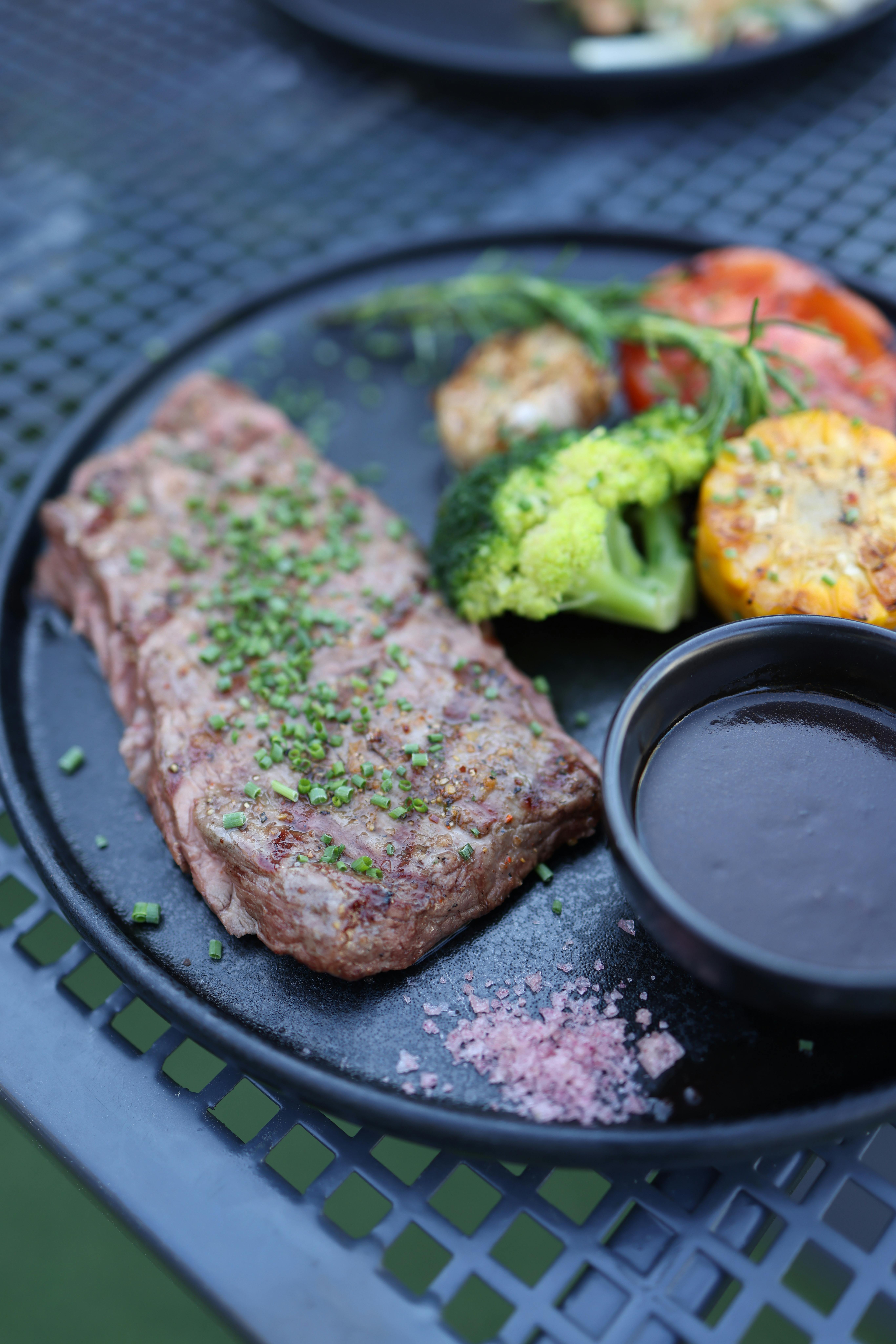Smart Ways to Use Keto Food List: Optimize Your Diet in 2025

Smart Ways to Use Keto Food List: Optimize Your Diet in 2025
As the popularity of the ketogenic diet continues to rise, understanding how to effectively utilize a keto food list becomes invaluable for both beginners and seasoned dieters alike. The keto diet, characterized by its high-fat, low-carbohydrate approach, offers numerous benefits, including weight loss, improved energy levels, and enhanced mental clarity. In 2025, optimizing your dietary choices through a well-curated keto food list can help you maintain ketosis and achieve your health goals more efficiently.
This article will delve into smart strategies for leveraging a keto food list, including meal planning tips, the benefits of low carb snacks, and how to effectively track your macros while enjoying delicious meals. By the end, you'll be equipped with practical insights on how to make the most of your dieting experience, enabling you to enjoy flavorful meals while adhering to healthy eating principles.
Key takeaways include a deep dive into food choices that support ketosis, the role of healthy fats and fiber, and meal prep strategies that simplify your journey. Let’s explore the ways you can enhance your ketogenic diet with optimized food selections for 2025.
Essential Elements of a Comprehensive Keto Food List
Understanding Ketogenic Guidelines
The foundation of any successful keto food list is a clear understanding of the ketogenic guidelines. Adhering to a low carb intake while emphasizing high healthy fat sources is essential. The standard ketogenic diet typically requires a ratio of approximately 70% fats, 25% proteins, and only 5% carbohydrates. This balance is crucial for pushing your body into a metabolic state of ketosis, where it permanently relies on fat for energy instead of carbohydrates.
Identifying Low Carb Vegetables
Low carb vegetables play a significant role in achieving the desired nutritional balance while maintaining flavor in your meals. Options such as spinach, kale, broccoli, and zucchini are not only low in net carbs but also rich in essential nutrients. Incorporating these into your meal prep can enhance your recipes and contribute to digestive health while keeping you satiated.
Incorporating Healthy Fats
Choosing the right sources of healthy fats is a critical aspect of your keto food list. Foods rich in omega-3s, such as avocados, olive oil, and fatty fish, not only support heart health but also contribute to maintaining optimal ketone levels. Including a variety of healthy fats in your meals can make your keto journey more enjoyable while bringing numerous health benefits.
Exploring Keto-Friendly Protein Sources
High protein meals are essential for preserving muscle mass while on a keto diet. Lean meats, eggs, and low-carb dairy products are excellent choices. Additionally, exploring alternative protein sources such as legumes and plant-based proteins, while keeping a keen eye on carb content, can diversify your meal options and enhance your nutrition profile.
Utilizing Sugar Alternatives
One of the biggest challenges on the keto diet often involves sugar cravings. Understanding which sugar alternatives are suitable for your keto food list can make a significant difference. Options like stevia, erythritol, and monk fruit provide sweetness without the carbs, allowing you to enjoy desserts and snacks without jeopardizing your dietary goals.
With these foundational aspects covered, let’s transition into practical meal planning strategies.
Effective Meal Planning Strategies for Keto Success
Establishing a Meal Prep Routine
Building a robust meal prep routine can significantly influence your success on the keto diet. Preparing meals in advance allows you to maintain portion control and ensures you always have keto-friendly meals on hand. Consider dedicating a few hours each week to prepare ingredients, cook bulk meals, and portion them into meal prep containers for easy access throughout the week.
Tracking Your Macros
To achieve your desired fat loss or health goals, you must track your macros effectively. Various apps and online resources can simplify this process, enabling you to monitor protein, fat, and carb intake closely. Maintaining a food diary can help ensure you stay within your recommended macros, supporting the maintenance of ketosis and helping you make informed food swaps when necessary.
Creating a Grocery List
Before heading out for grocery shopping, create a list tailored to your keto food list. This will help you avoid temptation and ensure you stick to essential foods only. Include a variety of low carb vegetables, healthy fats, and high protein sources to create a diverse range of keto meals.
Utilizing Leftovers Wisely
Being mindful of leftovers can maximize your meal efficiency. Meal planning around bulk cooking can lead to easy-to-reheat meals or creative reuse of ingredients. For instance, employing leftover chicken in salads or integrating odds and ends of vegetables into breakfast or lunch dishes can provide variety while minimizing waste.

Quick and Easy Keto Meals
Incorporating Quick Meals into Your Routine
Busy schedules can make adherence to a keto diet challenging. Luckily, discovering quick meals that comply with your keto food list can be a game-changer. Meals such as avocado egg salad or stir-fried low carb vegetables with protein sources provide nourishing options that can be prepared in minimal time.
Cooking with Essential Kitchen Tools
Having the right kitchen tools facilitates quick meal preparation. Slow cookers, air fryers, and efficient food processors can significantly reduce cooking time and simplify recipes, allowing you to whip up keto-friendly meals effortlessly. Investing in essential kitchen tools can be crucial for anyone serious about their ketogenic cooking.
Preparing Keto Snacks for On-the-Go
When hunger strikes in between meals, having quick low carb snacks on hand is vital. Options like homemade fat bombs, cheese crisps, or nut-based snacks can provide quick energy. These keto snacks are also excellent for maintaining your energy levels while curbing cravings during busy days.
Making Low Carb Desserts
Many assume desserts are off-limits on a ketogenic diet; however, numerous options exist that fit this lifestyle. Using cookware like silicone molds, you can create keto desserts using almond flour and sugar alternatives. Sweets such as keto cheesecake or chocolate avocado mousse can satisfy your sweet tooth without sacrificing your diet.
With delicious meal options covered, let’s explore the importance of understanding food labels and nutrition for better food choices.
Understanding Food Labels on a Ketogenic Diet
Interpreting Nutrition Labels
Understanding food labels is paramount when navigating the grocery aisles. Familiarize yourself with how to identify net carbs, which are calculated by subtracting fiber and certain sugar alcohols from total carbs. This knowledge enables you to make informed decisions on your food choices, ensuring you maintain ketosis and optimal health.
Identifying Low Glycemic Foods
Low glycemic foods play a crucial role in stabilizing blood sugar levels, which can be a challenge when adjusting to a low carb diet. Familiarizing yourself with these foods can help you develop a balanced keto food list, preventing spikes in blood sugar that could hinder your weight loss journey.
Meal Frequency and Timing Strategies
Implementing meal frequency and timing strategies can enhance your meal prep efficiency. Some keto dieters find success with intermittent fasting, where meals are planned within specific time windows throughout the day. This can aid in maintaining a calorie deficit while ensuring your body remains within a state of ketosis.
Addressing Keto Myths
The keto diet is often surrounded by misinformation. Understanding common keto myths empowers you to make more robust dietary decisions. For example, the belief that high-fat diets are unhealthy can be addressed through education about the nutritional density of healthy fats and their supportive role in achieving weight loss.

Smart Strategies for Long-Term Keto Success
Maintaining Ketosis During Eating Out
Eating out can pose challenges for maintaining ketosis, but with the right strategies, it can be done effectively. Opt for meals that emphasize protein and low carb vegetables, asking for substitutions where necessary. Many restaurants nowadays offer options suitable for the ketogenic lifestyle, helping you stay true to your diet even when dining away from home.
Incorporating Healthy Condiments and Flavor Enhancers
Healthy condiments can elevate your meals while adhering to your keto food list. Consider options like olive oil dressings, homemade mayo, or salsa without added sugar. Utilizing flavor enhancers such as herbs and spices can also enhance your meals without adding unwanted carbs.
Utilizing Online Resources for Keto Education
Many online resources, including apps and communities, are dedicated to educating individuals about the keto diet. Joining keto forums or utilizing diet-tracking applications can provide support and suggestions for recipes, meal ideas, and grocery hacks that streamline your dietary journey.
Monitoring Your Progress and Adjusting Strategies
Tracking your progress and adapting your strategies is crucial for maintaining long-term success. Regularly measuring your ketone levels, journaling your food intake, and assessing your energy levels can help you identify what works best for your body. Don't hesitate to make meal adjustments as necessary based on the feedback your body provides.
Q&A: Your Keto Questions Answered
What are the benefits of following a keto diet?
The ketogenic diet promotes weight loss, boosts energy levels, enhances brain health, and lowers blood sugar levels. It is particularly beneficial for individuals managing insulin resistance or type 2 diabetes.
What snacks are suitable for a ketogenic diet?
Some of the best low carb snacks include nuts, cheese, olives, and Greek yogurt. Always be mindful of portion sizes when snacking, as these can quickly add up.
Is keto effective for weight loss?
Numerous studies support the effectiveness of a ketogenic diet for weight loss, particularly in reducing body fat while preserving lean muscle mass. It is essential to maintain a calorie deficit while following the diet for best results.
Can intermittent fasting be combined with keto?
Yes, intermittent fasting can be successfully integrated with a ketogenic diet. Many find that fasting enhances ketosis and can lead to improved results in terms of weight loss and metabolic health.
What are common mistakes to avoid on a keto diet?
Common mistakes include neglecting to track macros, consuming high carb snacks, inadequate water intake, and failing to include variety in food choices. Awareness of these pitfalls can help keep you on track.
Implementing these smart ways to utilize a keto food list can streamline your diet and promote better outcomes on your wellness journey in 2025 and beyond.